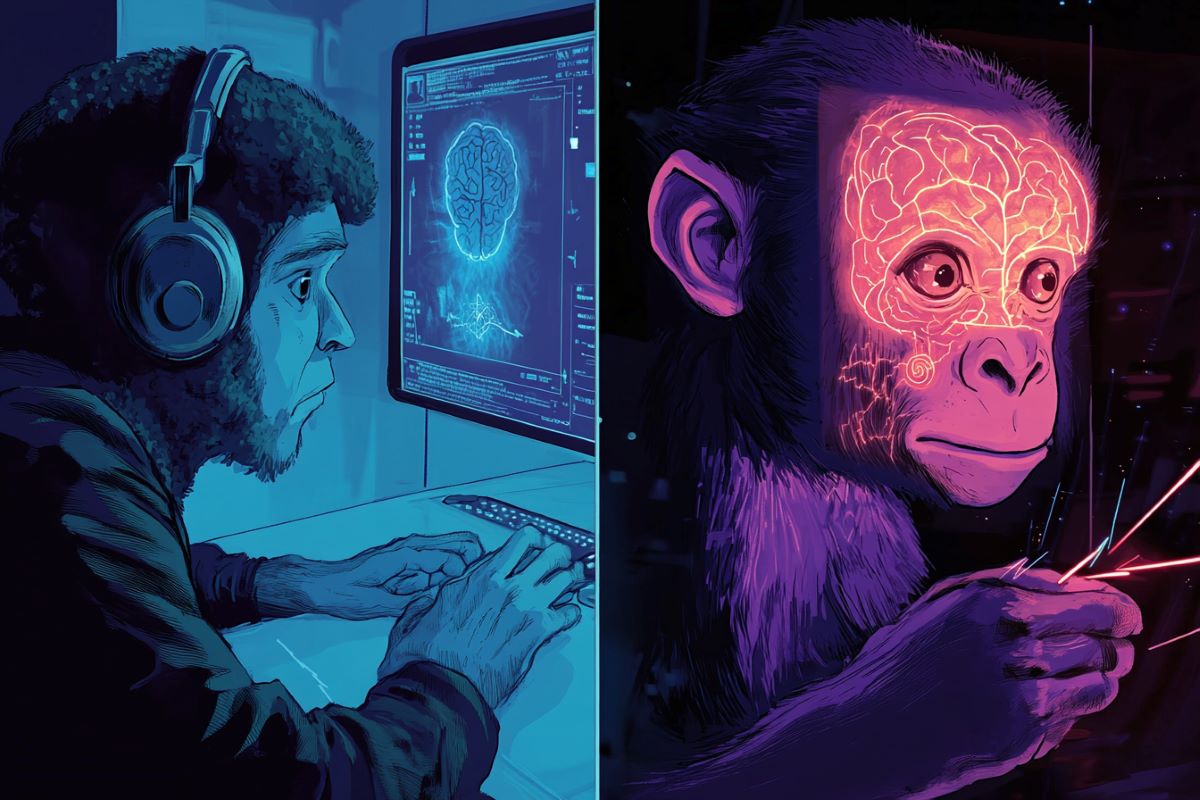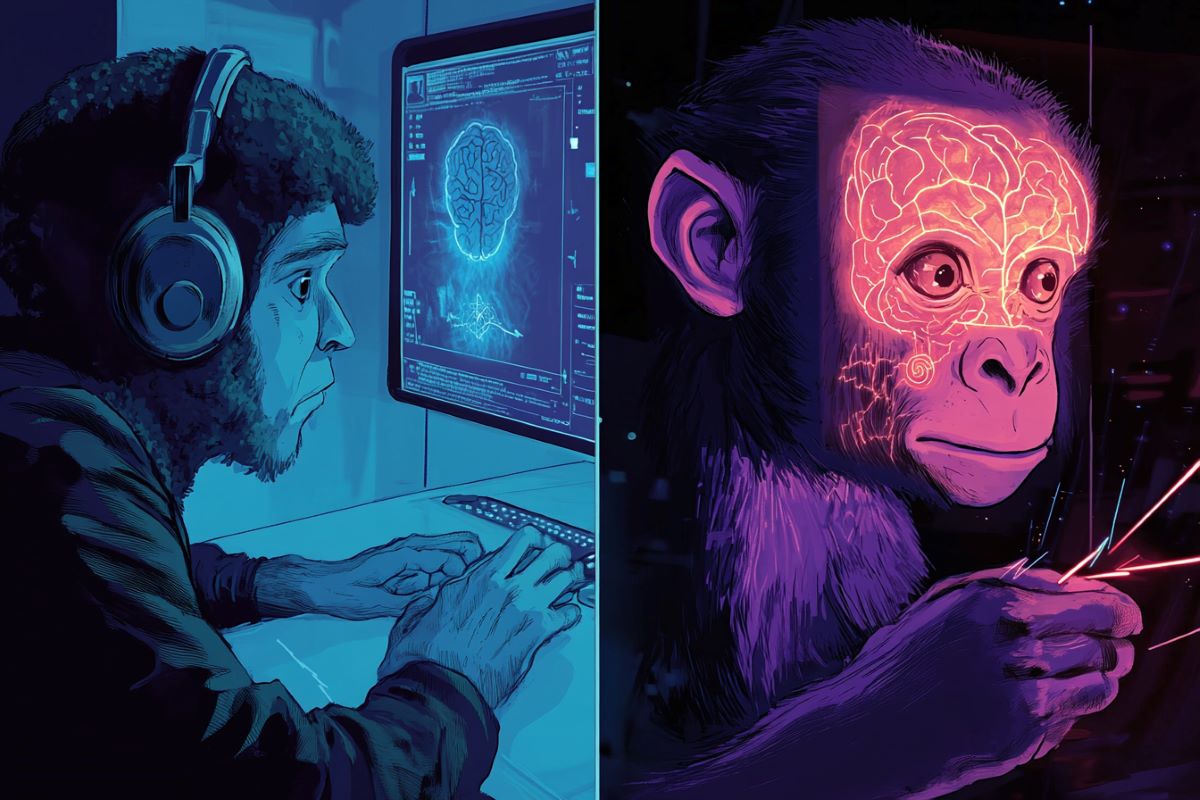
Overview: Recent research has shown that both humans and marmosets actively modify their behavior even after mastering an effective strategy for a task. Instead of relying solely on previously learned methods, they subtly tweak their responses based on their latest experiences. This continuous exploration may enable them to adapt to changing conditions or identify improved strategies over time.
In the study, researchers discovered that participants used a hazard model to anticipate event timing but still made adjustments based on previous trials. These results indicate that the tendency to explore is a natural part of decision-making, even when it sometimes results in avoidable mistakes. The research also enhances the validity of using marmosets as subjects for studying autism, demonstrating their cognitive similarities to humans.
Key Highlights:
- Behavioral Adaptation: Humans and marmosets exhibit behavioral adjustments based on prior trials, even after achieving proficiency in a task.
- Flexible Learning: This exploratory behavior can aid organisms in navigating uncertainties in their surroundings.
- Relevance to Autism: The study reinforces the idea that marmosets can serve as effective models for examining predictive differences in autism spectrum disorders.
Source: Picower Institute at MIT
A Balancing Act: Individual Exploration vs. Established Strategy
An intriguing discovery from MIT has revealed that both humans and animals possess an underlying inclination to continuously refine their task strategies, even after they’ve mastered what works best. These alterations in behavior may, at times, lead to errors, but this exploratory nature could have its advantages.
The behavior of oscillating between “exploitation” of known strategies and “exploration” of new potential alternatives may serve two critical functions, according to Mriganka Sur, the senior researcher behind the study published on February 18 in Current Biology.

In a world filled with uncertainties, periodically altering one’s behavior, even when task rules seem established, could uncover necessary adjustments.
Additionally, experimenting with new approaches, even when familiar strategies are effective, may uncover even better alternatives.
“If the objective is to maximize rewards, one might think it’s unwise to deviate once a perfect solution is found, yet exploration continues,” explained Sur, who holds the Paul and Lilah Newton Professorship at MIT’s Picower Institute for Learning and Memory and the Department of Brain and Cognitive Sciences.
“Consider food—while we each have our favorites, we still try new options because potential discoveries await.”
Timing Predictions and Task Performance
Leading the investigation, Tudor Dragoi, a former research technician now pursuing graduate studies at Boston University, and his team examined how humans and marmosets predict the timing of events.
Participants—three humans and two marmosets—were tasked with responding to the disappearance of an image displayed on a screen, where the visible duration varied across trials. Marmosets interacted with a tablet, while humans clicked a mouse; success hinged on their reaction time to the image’s disappearance without premature clicks.
While marmosets required additional training compared to humans, both groups exhibited similar patterns in their behavior. As the image’s duration increased, reaction times improved accordingly.
This phenomenon aligns with the hazard model of prediction, which states that the more prolonged the image is visible, the higher the chance of it disappearing soon. With increasing experience, participants demonstrated faster reaction times.
However, as the research progressed, Sur and Dragoi noticed an intriguing behavioral trend. Mathematical modeling of the reaction time data indicated that even after learning what to do, humans and marmosets allowed the results of their previous trials to shape their responses.
For instance, if an image disappeared quickly during one trial, they tended to respond quicker in the next trial, assuming a similar duration, whereas a longer display time would lead to a delay in their response on the following trial.
These results resonate with insights from a prior study published by Sur’s lab in 2023, where it was similarly found that even after mice learned a cognitive task, they occasionally deviated from the established strategy, prioritizing exploration over immediate rewards.
“The ongoing changes in behavior, even post-task mastery, may suggest a strategic form of exploration aimed at optimizing internal environmental models,” the researchers concluded in their latest study.
Implications for Autism Research
The alignment in behavior between humans and marmosets is particularly noteworthy, Sur pointed out. This finding is relevant because atypical prediction-making is a known characteristic of autism spectrum disorders.
Marmosets, due to their social nature and cognitive sophistication relative to mice, are increasingly being considered in autism research. Establishing their capability to model autism-related behaviors is crucial for future investigations.
By confirming that marmosets exhibit neurotypical behaviors regarding predictions, this study reinforces the notion that marmosets can serve as valuable models for autism research.
Alongside Dragoi and Sur, additional contributors to this research include Hiroki Sugihara, Nhat Le, Elie Adam, Jitendra Sharma, Guoping Feng, and Robert Desimone.
Funding: This research was supported by the Simons Foundation Autism Research Initiative through the Simons Center for the Social Brain at MIT.
About This Neuroscience Research Announcement
Author: David Orenstein
Source: Picower Institute at MIT
Contact: David Orenstein – Picower Institute at MIT
Image: Image credited to Neuroscience News
Original Research: Open access.
“Global to Local Influences on Temporal Expectation in Marmosets and Humans” by Mriganka Sur et al. Current Biology









